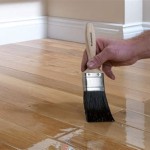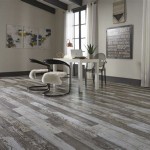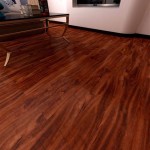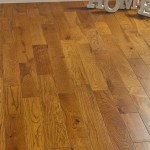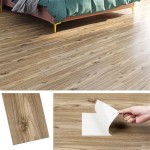Interlocking Wood Floor Tiles: A Practical and Stylish Flooring Choice
Interlocking wood floor tiles, also known as wood flooring planks, are a popular choice for both residential and commercial spaces. These tiles offer a number of advantages over traditional wood flooring, making them a practical and aesthetically pleasing option for homeowners and business owners alike. This article will delve into the key benefits of interlocking wood floor tiles, explore their installation process, and discuss their unique characteristics.
Ease of Installation and DIY Potential
One of the main advantages of interlocking wood floor tiles is their ease of installation. The interlocking system, which typically involves tongue-and-groove edges, allows for quick and seamless assembly without the need for adhesives or nails. This makes them a great option for DIY projects, as they can be installed by homeowners with basic skills and tools. The ease of installation also translates to faster project completion and less disruption to daily life, compared to traditional wood flooring installation.
Furthermore, the modular nature of these tiles allows for easy replacement of individual tiles in case of damage or wear. Unlike traditional hardwood planks where a damaged section would require replacing the entire plank, with interlocking tiles, only the damaged tile needs to be removed and replaced, minimizing waste and effort.
Durability and Longevity
Interlocking wood floor tiles are known for their durability and longevity. The interlocking system creates a stable and strong floor surface that can withstand heavy foot traffic. The tiles are also resistant to scratches, dents, and other forms of wear and tear, ensuring that they maintain their beauty and functionality for years to come. Moreover, the tiles are often made from high-quality hardwoods, which are naturally resistant to moisture and decay, making them ideal for areas prone to humidity or spills.
In addition to the natural durability of wood, interlocking floor tiles often come with protective finishes that further enhance their resistance to wear and tear. These finishes can include various types of coatings, such as polyurethane or wax, which create a protective barrier against scratches, stains, and moisture. The specific finish applied will depend on the manufacturer and the intended use of the tiles.
Versatility and Design Options
Interlocking wood floor tiles come in a wide variety of styles, colors, and finishes, offering homeowners and designers a wide range of options to suit any aesthetic preference. Whether you are looking for a classic wood look, a modern minimalist design, or something more contemporary, interlocking tiles can meet your needs. They are available in various wood species, each with its unique grain pattern and color, allowing for a truly personalized touch.
Furthermore, the modular nature of interlocking tiles allows for creative patterns and designs to be created. Tiles can be arranged in different layouts, such as herringbone, parquet, or even geometric patterns, adding an extra layer of visual interest to the floor. This versatility allows for the creation of unique and distinctive spaces that reflect the homeowner's individual style.
Installation Process
The installation process for interlocking wood floor tiles is relatively straightforward and can be completed by most homeowners with basic DIY skills. The first step is to prepare the subfloor by ensuring that it is level and smooth. Any unevenness or imperfections in the subfloor can result in a wobbly and uneven floor surface.
Next, a moisture barrier is typically installed over the subfloor to protect the wood tiles from moisture damage. This can include a vapor barrier or a moisture-resistant underlayment. Finally, the tiles are laid out, starting from one corner of the room and working outwards. The tiles are simply snapped together using their interlocking edges, ensuring a snug and secure fit. The installation process may vary depending on the specific type of tiles and the manufacturer's instructions.
Maintenance and Care
Interlocking wood floor tiles are relatively low-maintenance and easy to keep clean. Regular sweeping and vacuuming will remove dust and debris, while occasional mopping with a damp cloth will clean up spills and other messes. It's important to use cleaning solutions that are specifically designed for wood floors, as harsh chemicals can damage the finish and the wood itself.
For deeper cleaning, a wood floor polish can be used to restore the shine and protect the tiles from scratches and stains. However, it's important to follow the manufacturer's instructions regarding the frequency and type of polish used.

Interlocking Floor Tiles Wood Vinyl Top Modutile Made In Usa

Alden Design 12 X Interlocking Wood Flooring Tiles For Indoor Outdoor 11pcs Natural Wal Com

Spc Vinyl Flooring 5mm Pisos Interlocking Floor Tile Wooden Click Lock Tiles Made In China Com

Kids Friendly Diy Interlocking Floor Tiles Multi Choices Wpc Splicing Decking Indoor Wood Flooring Made In China Com

Yofe 1 Ft X Acacia Wood Interlocking Deck Tiles In Natural Indoor Outdoor Striped Pattern Floor 10 Per Case Camynl Gi40386w6851 Tile10sp01 The Home

Yofe 1 Ft X Acacia Wood Interlocking Deck Tiles In Natural Indoor Outdoor Checker Pattern Floor 20 Per Case Camynl Gi40384w6851 Tile20cp01 The Home

Alden Design Pack Of 10 Wood Interlocking Deck Tiles For Flooring Outdoor Indoor 12 2 Wal Com

Outsunny 1 In X 11 75 Brown Wood Interlocking Deck Tiles 27 Pack 844 325bn Rona

Golener Wood Interlocking Deck Tiles Flooring Easy To Install Floor Tile For Both Indoor Outdoor Use Diy Patio Balcony Poolside Snap Welcome Mat Office Home Pack Of 9

Whole Process Interlocking Indoor Laminate Flooring Covering Customized 12mm Ac4 Style Free Choice Of Wood Floor Tiles
